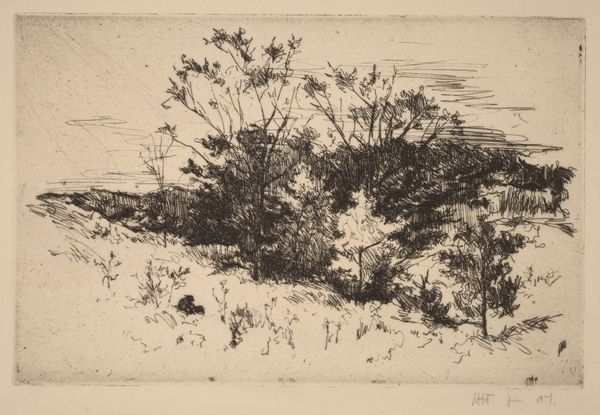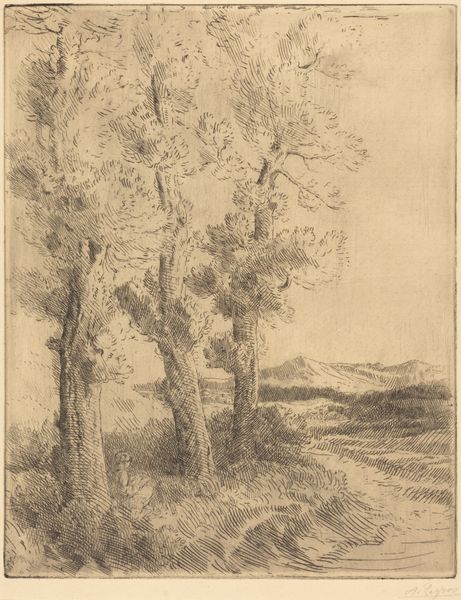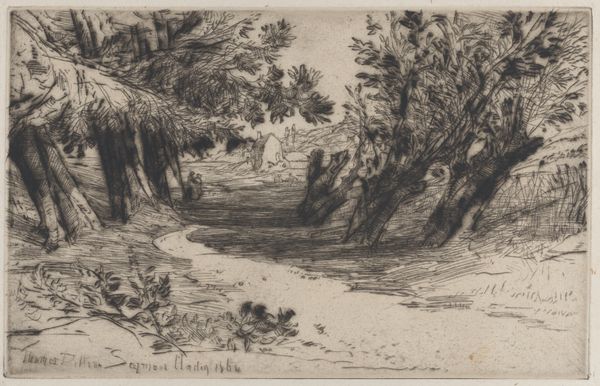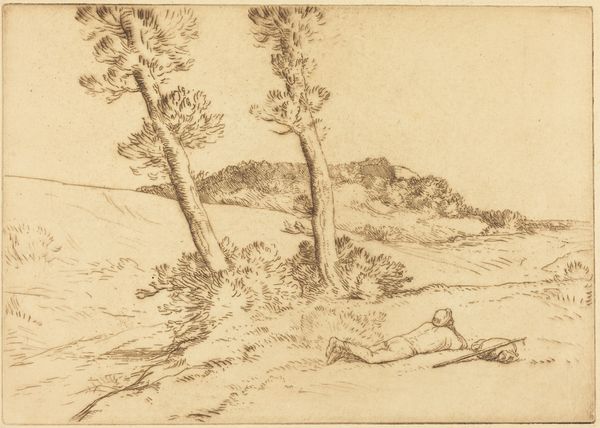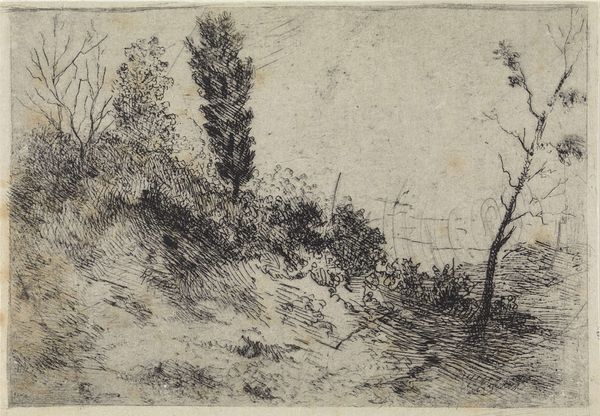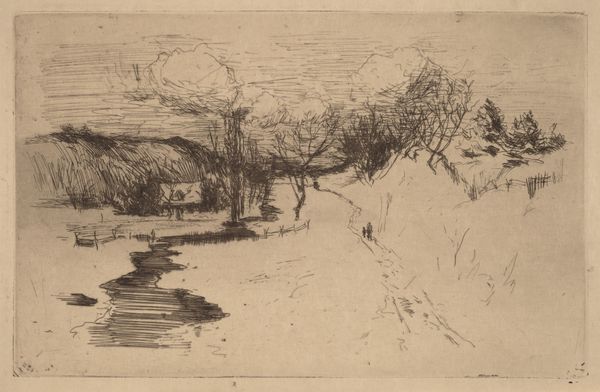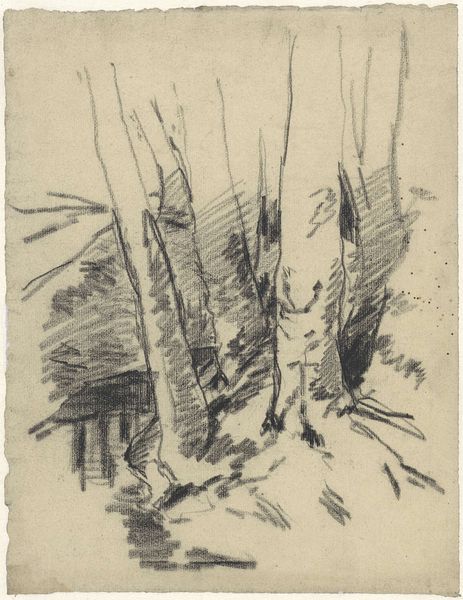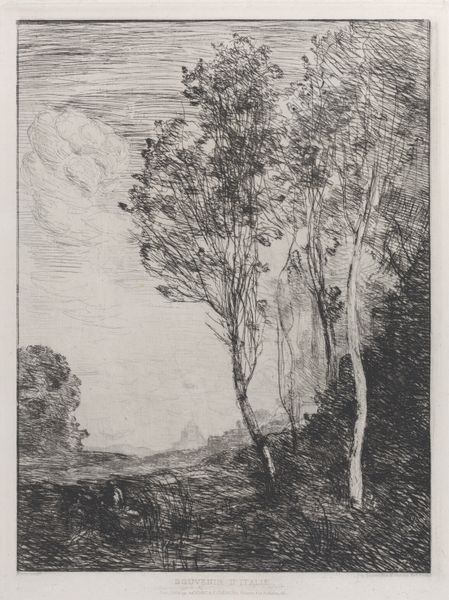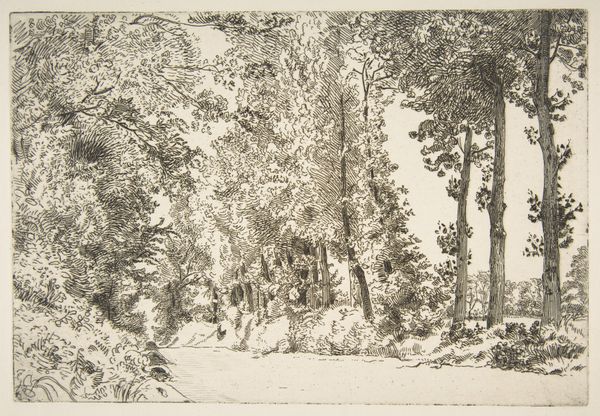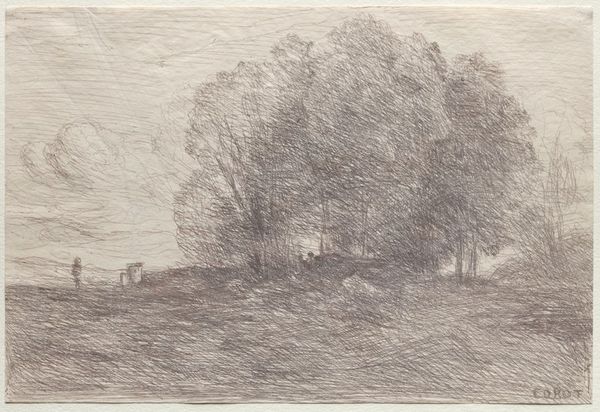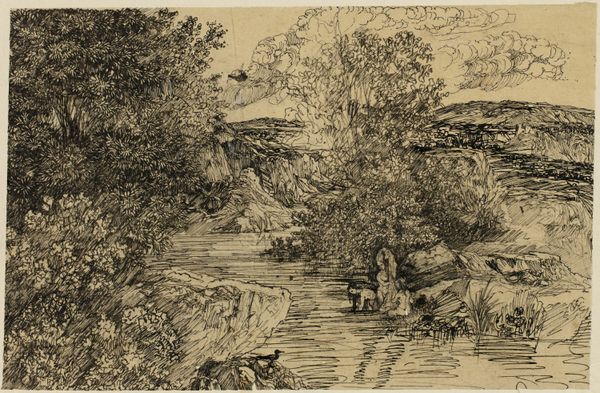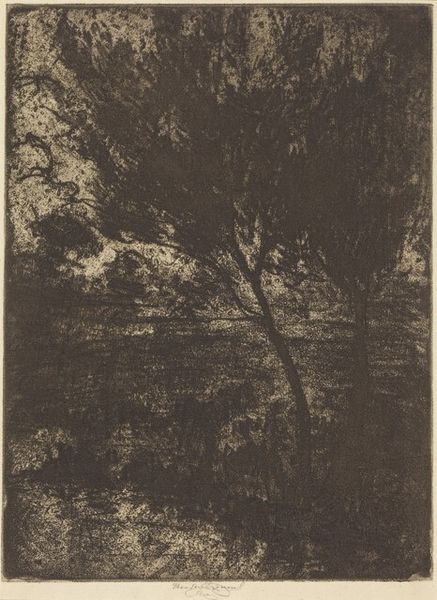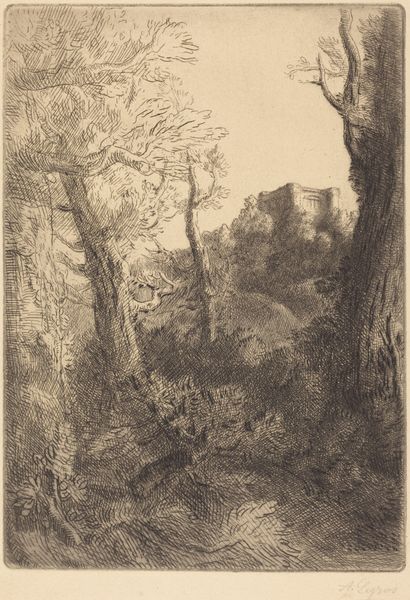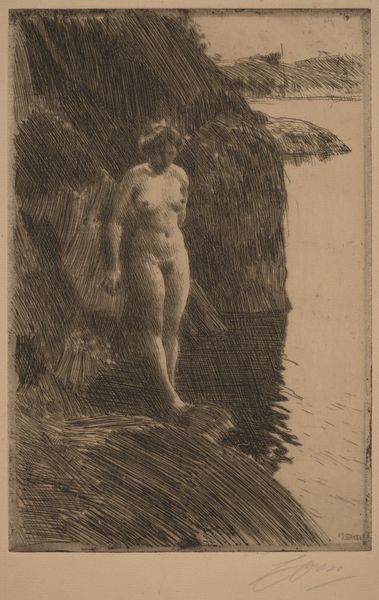
Dimensions: 70.5 x 91.5 cm
Copyright: Pyotr Konchalovsky,Fair Use
Curator: This is Pyotr Konchalovsky's "Rocks and Sails," painted in 1924. It captures a coastal scene with a strong emphasis on natural forms. Editor: It has a sturdy, grounded quality. The brushwork feels so present—almost tactile. You can practically feel the texture of the rocks and the wind on the water. Curator: Exactly. Let’s consider Konchalovsky's journey. Coming from a background deeply invested in Russian avant-garde movements, particularly influenced by Cubism and Cézanne, one might ask how those interests affect how we view nature? Editor: That makes me wonder about the paint he used, too. How did the availability and production of colors affect this rendering of light on water? The blue is not simply *blue*; there's a complex mixture evident. Was he grinding his own pigments? Curator: What I find fascinating is how the seascape genre, traditionally associated with Romanticism's sublime power, is complicated here by Konchalovsky's rendering it accessible. It doesn't inspire the feeling of insignificance when facing nature but coexisting within nature. Editor: I agree; the scale invites intimacy. You can almost feel yourself among those rocks. The artist invites us into a kind of personal interaction with the elements. I would be really curious to learn where those raw materials came from and how Konchalovsky's social environment had access to these resources in the early 20th century. Curator: Contextualizing that within the revolutionary fervor in Russia then, we can view it not merely as an aesthetic landscape, but almost as a quietly subversive claim to the dignity of the natural world accessible to everyone. Not just the Tsars or elites, which, as you mentioned, aligns it within his socio-political framework. Editor: That adds layers of significance to something that appears initially to be just a tranquil seascape. The simple act of depicting a shared connection to a landscape, available to all, becomes a very conscious choice. Curator: It shows how closely intertwined art-making and cultural narratives really are. Editor: Absolutely. It's an invitation to look beyond the surface, to consider the artist's hand, materials, and intent.
Comments
No comments
Be the first to comment and join the conversation on the ultimate creative platform.
